Choosing the right pair of boots is arguably the most important decision for a walker.
After all, if your feet aren’t comfortable or your footwear can’t cope with the conditions, your trip into the great outdoors is going to be that much less enjoyable.
A good pair of boots will keep you stable on rocky ground, keep your feet dry and won’t cause blisters.
We tested 13 different pairs of boots, ranging from lightweight models more suited to valley walking to full-on mountaineering boots that will be at home on the UK’s highest peaks. None of them were tested in winter conditions and they are not designed to be used with crampons.
We evaluated how well they performed: how stable they kept the foot; how well they gripped in different situations; how well they protected the foot.
We also marked them for comfort, how suitable they were for different terrains, the overall quality of the footwear and how well they represent good value for money – not necessarily just a score for how inexpensive they were. Thankfully, gone are the days when boots needed weeks of breaking in. Most modern boots will reach their normal level of comfort within two or three outings.
We tested whether the boots induced heel lift when heading uphill or allowed the foot to slip forward when descending. The former can cause blisters and the latter discomfort or even blackened nails.
But everyone’s feet are different, so it’s important you use our review to inform yourself as to the suitability for your use, and then try on a pair at a reputable retailer who will take time to make sure the boot will fit your foot. Wisdom says visiting a shop later in the day is preferable as your feet will expand and spread a little as you stand and walk on them.
During the period of testing, we noticed the effect of the reduced value of the pound on prices. Quite a few brands have had to raise prices as the UK’s currency has weakened. We’ve tried to quote the most up-to-date typical figures for the boots in the test.
AKU Alterra GTX
Price: £194.95
Colour: brown/black
Weight: 1,484g/pair
Construction: suede/stretch fabric
Waterproofing: Gore-Tex Performance Comfort membrane
Outsole: Vibram Octopus
Country of manufacture: Romania
Crampon compatible? No
Women’s model? Yes
Sole stiffness: 6
Sizes: 3-13
The Alterra GTX has uppers made from suede with the ankle collar and tongue using stretch fabric with padding. The ankle cuff has ventilation too.
The AKU boot is designed for walking on medium technical difficulty mixed terrain and over long durations.
The boot has a good hard protective heel cup and at the other end of the Alterra, there is a hard toebox with rubber rand to protect from rocks.
The AKU boots have a sturdy feel and weigh in towards the top end of the scales among models in the test.
Lacing is via a combination of webbing loops at the toe end, then three sets of free-running metal lace loops and another pair of webbing loops directing down to the heel. A double set of metal hooks completes the lacing set-up. The boots come with an alternative pair of pale grey laces. Because the tongue is quite soft, care needs to be taken not to overtighten the laces to the extent they dig into the foot.
Waterproofing is via a Gore-Tex Performance Comfort membrane.
The soft collar and tongue are comfortable and allow ankle movement on uneven ground without any digging into the user.
The sole is fairly stiff and gave good support on rocky ground.
The sole unit is made up of a nylon and EVA lasting board to give the boots stiffness. There is then a dual-density midsole with two types of polyurethane, one providing more cushioning and the other support for the foot.
The outsole is a Vibram Octopus unit. The whole sole unit is asymmetric, using AKU’s Elica system. This has deeper cushioning on the outer side of the heel and there’s a small extension of the outsole on the outer edge too. AKU says this accommodates the natural opposite inclination of the foot helps distribute weight more evenly when the foot strikes the ground.
The forefoot is reasonably broad and the heel cup and lacing set-up held the foot well on uphill sections, with no heel lift.
The AKU boots had good grip. On wet grass braking and traction were very good, and on wet rock and firm mud the Alterras gripped well.
Comfort was very good, with plenty of underfoot cushioning, no discomfort at the flex point of the upper and no rubbing.
The AKU Alterra GTX is an example of a good piece of outdoor gear: you put it on and forget about it. It performed well on all our test terrains and provided a comfortable experience over long treks. Its drawbacks are the fairly hefty price tag and the relatively high weight, but that’s down to its sturdy materials and construction. Quality was good.
Performance 35/40
Comfort 26/30
Versatility 8/10
Quality 8/10
Value for money 7/10
Total score: 84/100
Alt-Berg Kisdon
Price: £214.99
Colour: brown
Weight: 1,528g/pair
Construction: 2.4mm-2.6mm Nubuck leather
Waterproofing: Sympatex
Outsole: Vibram Masai
Country of manufacture: not stated
Crampon compatible? No
Women’s model? No
Sole stiffness: 8
Sizes: 4-14
The Richmond, North Yorkshire, based boot maker is renowned for producing traditional leather boots, both for military and police users and for the general outdoor market.
Most of its hiking boots are made at its factory in northern Italy.
The Kisdon is a three-season walking boot made from one-piece Nubuck leather, with a soft, padded, ventilated ankle cuff.
The sole is the stiffest of all boots in the test and has good torsional strength too.
The heel has good stiffened protection, and protection at the toe comes from the hard rubber rand that runs all the way round the boot above the midsole. The tough section at the front of the boot gave good protection against rocks and knocks.
All lacing fixtures are metal, with two pairs of d-rings at the front, followed by three loops, a metal lace hook set well back to hold the foot into the heel area, and finally two pairs of metal hooks at the ankle.
Lining is waterproof Sympatex, which uses no fluorocarbons or PTFE.
The midsole is Alt-Berg’s Tri-Flex three-season version. The outsole is Vibram’s Masai, with a Micro midlayer that offers a medium amount of underfoot cushioning.
What marks the Kisdon out from most of Alt-Berg’s other models is its G Fit last. The company’s main range of boots comes in a variety of widths, from extra narrow to extra wide.
The G Fit range, which also includes the two- to three-season Keld, is built on a last that has extra volume and width, particularly at the forefoot area. The heel remains a medium size. The midsole is also designed for this extra width too.
So if your foot happens to be this shape, rather than trying to squeeze into a narrower boot, the Kisdon could be a good bet.
Alt-Berg has designed the Kisdon with Lake District fells and Scottish mountains in mind, and the boot performed well in this type of terrain. The outsole’s grip was very good, with traction on wet grass and rock among the best, and braking on these surfaces good too.
Quality of the Alt-Berg boots was very good, with top quality leather. The boots are no lightweights, and came in near the top of the test scales league. Alt-Berg included with the boots a can of Leder-Bök, with helps increase water resistance and maintain suppleness. If you want to increase water-shedding qualities of the boot, you can use the company’s Leder-Gris, but this will give the Kisdons a more conventional dark, shiny full-grain leather look.
In use, there’s a definite rocker action to the Kisdon, with a double, heel-then-forefoot strike. Though the underfoot cushioning is middling, there was no discomfort from foot pounding. Careful lacing is needed to avoid discomfort from the boot at the base of the ankle, but even with the laces not tightly cinched, there was no heel lift.
The shape fitted our tester’s foot well, with no pressure on the forefoot, thanks to the wide fitting. The heel width was just right too, holding the foot well. Check whether the Kisdons fit your foot.
The boots give good stability on technical ground, and are tough enough to take the knocks.
The weight is high, as is the price, but with care, the Alt-Berg Kisdons will give years of service.
Performance 36/40
Comfort 24/30
Versatility 8/10
Quality 8/10
Value for money 7/10
Total score: 83/100
Asolo Thyrus GV
Price: £165
Colour: grey
Weight: 1,110g/pair
Construction: 1.6mm-1.8mm Perwanger leather/Schoeller softshell
Waterproofing: Gore-Tex Extended Comfort
Outsole: Vibram Redster Megagrip
Country of manufacture: Romania
Crampon compatible? No
Women’s model? Yes
Sole stiffness: 5
Sizes: 6-13½ (men’s); 3½-9 (women’s)
The Asolo boot is made from Perwanger leather with an ankle cuff in Schoeller softshell material. It’s part of the brand’s A-Fast collection that is aimed at hillwalkers who want to keep up the pace.
It feels comfortable instantly when slipped on to the foot. The leather is fairly soft and supple and follows the contours of the foot well.
It’s lightweight for a leather boot and feels more like an approach shoe with an extended ankle section. The sole is of medium stiffness but gives a good amount of torsional support.
There’s good underfoot cushioning thanks to the dual-density EVA midsole. The heel box is stiffened and gives good protection. Toe protection is via a hard rubber and TPU rand in that area.
Lacing is via a free-running combination of metal d-rings and loops, with two metal lace hooks at the ankle. Though there’s no deep lace hook pulling into the heel area, this didn’t affect performance and there was no heel lift when heading up steep hills.
The ankle cuff and top of the tongue had just enough padding for comfort without adding unnecessary weight.
The outsole is Vibram Redster, exclusive to Asolo, and using the Megagrip rubber compound. Grip on wet grass and wet rock were good, and on technical ground there was a good amount of stability from the sole unit.
Waterproofing comes from a Gore-Tex Extended Comfort membrane. Combined with the 1.6mm-1.8mm leather, this kept the rain out on wet trips.
We found the Thyrus GV very comfortable on the hill. The leather is firm enough to support the foot without discomfort. There was the right amount of underfoot cushioning and the simple lacing system held the foot well, with neither heel lift uphill nor sliding forward into the toe box on descents.
Quality was good and the weight meant our feet didn’t get overtired on long treks.
Performance 33/40
Comfort 26/30
Versatility 7/10
Quality 7/10
Value for money 7/10
Total score: 80/100
Berghaus Supalite GTX II
Price: £155
Colour: brown
Weight: 1,086g/pair
Construction: Pittards 1.6mm-1.8mm full-grain leather
Waterproofing: Gore-Tex Performance Comfort
Outsole: Vibram Supalite
Country of manufacture: Vietnam
Crampon compatible? No
Women’s model? Yes
Sole stiffness: 4
Sizes: 7-12 (men’s); 4-8 (women’s)
The latest incarnation of Berghaus’s Supalite leather boot has shaved a little more weight off to produce one of the lightest models in our test.
The boot uses Pittards leather, which has a wrinkly, almost antique look that will appeal to some but may not to others. The leather is quite soft and supple, but there’s a stiffened heel cup and also a stiff toe box.
There’s no raised rand between sole and upper but there’s a small continuation of the sole’s rubber at the very front of the boot to help protect against knocks and rocks.
There’s some padding around the ankle cuff and tongue top, which are nicely lined with pale leather, but the cushioning is fairly minimal, presumably to keep weight down. There is more around the ankle bone area and back of the boot using memory foam, which helps comfort, but the rear of the top boot’s rim is cut quite low, which means it cuts in halfway down the Achilles’s tendon, which is uncomfortable in certain situations.
The forefoot is fairly roomy and comfortable though our tester found the outside of the forefoot just a little on the narrow side.
The lacing system uses metal loops and hooks; three lower loops lead up to metal locking hooks, with two hooks above this. Curiously, the locking hooks direct towards the arch of the foot rather than the heel. Because of this, there is a tendency to a slight heel lift when walking uphill. The foot wasn’t held too firmly downhill either, and shifted forward slightly.
There’s a reasonable amount of underfoot cushioning, thanks to an EVA midsole. The outsole is Vibram XS Trek Supalite with fairly well spaced pattern which helps prevent mud clogging. Traction and braking from the outsole were very good.
The boots have Gore-Tex Performance Comfort waterproofing which, combined with the water-resistant properties of the Pittards leather, kept our feet dry during testing.
The Berghaus boot is aimed at less technical terrain, typically coastal, valley and hill walks on defined paths. The sole unit is quite flexible so is not really designed for gnarlier mountain routes. The designers have done well to produce a leather boot that tips the scales at just a little over the kilo per pair, but cutting back on padding round the ankle reduces comfort, and the locking lace hook is poorly positioned for keeping the foot in place on uphill sections.
Performance 33/40
Comfort 22/30
Versatility 6/10
Quality 7/10
Value for money 7/10
Total score: 75/100
Columbia Terrebonne Outdry Extreme Mid
Price: £145
Colour: black/grey
Weight: 1,078g/pair
Construction: OutDry Extreme
Waterproofing: OutDry Extreme
Outsole: Vibram Mont
Country of manufacture: Vietnam
Crampon compatible? No
Women’s model? Yes
Sole stiffness: 4
Sizes: 6-14 (men’s); 3-10 (women’s)
This Columbia model is described as a mid shoe and its styling reflects that. The lower part of the upper could easily be an approach shoe.
It’s constructed using Outdry Extreme, which effectively has its waterproof layer on the outside rather than in a hidden membrane. This gives the uppers a very different look from traditional leather or fabric boots – quite plasticky.
The fabric of the uppers is reinforced in parts by a sort of exoskeleton, part of which gives extra stiffening at the sides of the heel. The heel cup itself is stiffened and has extra exterior protection from a raise rubber section at the back of the boot. The toe box is also protected by a raised rubberised rand.
The lacing has four pairs of lower webbing loops and then there’s a set-back metal locking pair of hooks, aligned to the heel area to help prevent heel lift when heading uphill. Above these are two pairs of similar metal hooks to the front ankle area.
There’s some padding at the ankle cuff, particularly round the side, but at the front there’s much less and the rear side of the top lace hooks are visible through the boot’s upper, so careful positioning of the tongue is necessary to make sure this is covered when knotting the laces. Even then there is a little discomfort from the ankle cuff. The rear of the top edge of the boot is cut low.
There’s a good amount of underfoot cushioning from the Techlite midsole. The outsole is a Vibram Mont Performance Durability model with a rounded x-shape insert and extra grip areas at the heel and toe.
It’s very flexible, so we wouldn’t recommend use on very technical mountain routes. The outsole looks very much like that of a trail shoe, and the Omni Grip pattern gave very good traction and braking on rock and grass.
The Terrebonne Outdry Ex Mid Shoe is quite high volume at the forefoot, though not as wide as some of the boots in the test. We found that, because of this, rather than flexing where you might expect, the Columbia boot mainly flexed forward of this, towards the front of the toe area, with the result that a little discomfort occurred where the fabric folded in to the big toe in particular at this point. It wasn’t significant, but may niggle after prolonged use.
On the plus side, the Terrebonne is light – the lightest in test, so if fast movement over long distances is your thing, and it fits you well, it could be a good choice.
The Outdry system worked well and kept the water out but we found it slightly warmer in use than some of the other membranes.
Performance 33/40
Comfort 23/30
Versatility 6/10
Quality 7/10
Value for money 7/10
Total score: 76/100
Haglöfs Eclipse GT
Price: £150
Colour: brown
Weight: 1,284g/pair
Construction: 1.4mm-1.6 mm Nubuck and 1.3mm suede,
Waterproofing: Gore-Tex Performance Comfort
Outsole: AHAR Plus
Country of manufacture: Indonesia
Crampon compatible? No
Women’s model? Yes
Sole stiffness: 5
Sizes: 7-13 (men’s); 4-8 (women’s)
The Eclipse GT has uppers made from a reddish-brown Nubuck leather with a slightly darker suede area in the rand area and heel. The leathers are from an eco-friendly source, according to Haglöfs.
The ankle area rises fairly high and there’s a fabric cuff with good padding. The top of the tongue has padding too.
Waterproofing comes from the water-resistant Nubuck and from a Gore-Tex Performance Comfort membrane.
The heel cup is hardened to provide protection and the toe box has a hard rubber reinforcement on its exterior which protected well against rocks and knocks.
The sole unit is fairly flexible but has a TPU chassis that provided good torsional stability. Underfoot cushioning comes from a Solyte midsole section. The outsole is Haglöfs’ own AHAR Plus, with a slightly cut-away heel section.
Lacing uses four pairs of webbing loops then metal lace hooks, with the locking hook directed to the front of the heel section. Two pairs of metal hooks complete the system.
The locking lace hooks work very well, allowing the forefoot lacing to be adjusted to the foot volume separately without overtightening, while still keeping the ankle in place. The laces kept the foot in place well, with no heel lift on uphill sections or forward sliding downhill.
Underfoot cushioning was about the right amount, and overall the boot felt secure and comfortable, supporting the foot well on technical ground.
Traction from the AHAR Plus sole was very good and braking was good too. The heel section of the outsole has a gel insert which helps absorb pounding when on hard surfaces.
On wet trips, the Haglöfs boots kept the feet dry. As with most boots with a waterproof membrane, the Eclipse GT felt quite warm in all but the coolest days.
The boots are middling in weight, but have good quality Nubuck and Suede uppers. Overall quality was good.
The Haglöfs boots performed well over a variety of terrains and will serve well over in all weathers outside winter conditions.
Performance 35/40
Comfort 25/30
Versatility 7/10
Quality 8/10
Value for money 7/10
Total score: 82/100
Keen Galleo Mid WP
Price: £139.99
Colour: brown
Weight: 1,404g/pair
Construction: leather
Waterproofing: Keen.Dry
Outsole: Keen dual compound
Country of manufacture: Romania
Crampon compatible? No
Women’s model? Yes
Sole stiffness: 5
Sizes: 6-13 (men’s); 3½-8½ (women’s)
The Galleo Mid is comfortable straight out of the box, though it is among the heavier boots in the test.
The Nubuck leather uppers are quite supple, with a moderate amount of stiffening at the heel cup. The leather has water-resistant treatment and the boots have Keen’s own Keen.Dry waterproof membrane. A raised rubberised rand provides protection at the toe area, and the rand continues at a low level through the length of the boot.
The ankle cuff is well padded fabric and the tongue also has padding in its upper area.
Lacing uses metal hooks throughout, apart from one combined metal-webbing loop that connects to a webbing strap that directs its force to the top of the heel section. In addition, there’s a locking metal lace hook directed at the bottom of the heel. This set-up keeps the foot in place well while heading uphill, with no heel lift.
The polyurethane midsole is bonded on to the uppers and has a shank running the full length of the boot to give stability. The outsole has two different densities of rubber, with the outer edges, heel and toe made from a harder compound.
The combination gives a good amount of underfoot cushioning. A PU section in the heel also helps shock absorption.
Traction and braking on damp rock grass was good, and the Galleo Mid coped reasonably well with mud.
The forefoot is quite roomy so will fit people with wider feet in this area quite well. The foot was held well in the heel area, and there was no sliding forward of the foot when heading downhill.
The Keen boots are assembled in its Romania factory, from materials sourced internationally. They represent good value for an all-rounder for moderate hillwalking and trips in less technical terrain, though they are among heavier models in the test.
The Keen.Dry waterproofing kept our feet dry in testing on a particularly wet day.
Performance 34/40
Comfort 25/30
Versatility 6/10
Quality 7/10
Value for money 7/10
Total score: 79/100
La Sportiva Trango TRK GTX
Price: £185
Colour: black/yellow
Weight: 1,278g/pair
Construction: abrasion-resistant fabric/Thermo Tech
Waterproofing: Gore-Tex Performance Comfort
Outsole: Vibram with toe climbing zone
Country of manufacture: China
Crampon compatible? No
Women’s model? Yes
Sole stiffness: 7
Sizes: 39-48 (≈6-13) (men’s); 36-40.5 (3½-7) (women’s)
The Trango TRK has a definite Alpine look, with its origins in the Trango family of mountaineering boots.
Its uppers are water-resistant fabric with a thermoplastic overlay in parts, bonded with thermo-injection technology. All of this is designed to keep weight down while maintaining performance.
The boot has a Gore-Tex Performance Comfort membrane to keep out the rain, which it did during our tests though, as with all fabric boots, there’s a certain cooling effect when the uppers get soaked during wet days, even though the water is kept out.
The ankle cuff is tough-feeling fabric with ventilation in the lining and just enough padding for comfort. The tongue benefits from similar foam padding.
The heel cup is hardened and kept our feet in position well, with no movement and good support. The toe box is also strengthened with a rubberised section which also forms the front section of the rand with the mid section using the thermoplastic covering.
Lacing is by four pairs of webbing loops then a metal locking hook, directed back to the heel. Two final pairs of metal hooks completes the system. It was fairly simple to adjust lacing to get the right balance of comfort in the forefoot and support for the arch and heel. There was no heel lift uphill and the foot was held in place well on downhill sections.
We encountered a slight discomfort in the upper forefoot at the flex point where the uppers pressed down slightly into the foot between the second and third lace loops.
The midsole is dual density and had a good amount of underfoot cushioning. The Vibram outsole rubber is quite hard and there’s a flat climbing zone at the toe which is useful on technical rocky ground.
The forefoot is reasonably roomy, though anyone with very wide feet may find the outer forefoot a little cramped.
Traction and braking on our mix of grass, rock and mud on test routes was good.
La Sportiva has designed the Trango TRK GTX for trekking and backpacking, particularly with a heavy pack, and the boots give very good stability and support on technical ground, trails and off-path excursions.
Despite looking quite beefy, they’re relatively light and there’s enough cushioning in the midsole to make long walks comfortable. The price is at the upper end of the models in the test, but quality was good, and the design is quite snazzy.
The Trango boots will cope with all conditions short of full winter hillwalking, though they are quite warm on days when the temperature climbs. Walkers heading for the mountains of Scotland and the hills of England and Wales will find La Sportiva’s boot up to the job and, though they look quite Alpine, the Trango TRK GTXs are comfortable enough for tootling round on low-level routes too.
Performance 35/40
Comfort 25/30
Versatility 8/10
Quality 8/10
Value for money 7/10
Total score: 83/100
Lowa Bormio GTX QC
Price: £150
Colour: brown
Weight: 1,082g/pair
Construction: full-grain Nubuck leather
Waterproofing: Gore-Tex
Outsole: LOWA Vialta III
Country of manufacture: Slovakia
Crampon compatible? No
Women’s model? Yes
Sole stiffness: 3
Sizes: 7-12 (men’s); 4½-8 (women’s)
Lowa describes the Bormio GTX as having a casual look, and the boot wouldn’t look outlandishly out of place around town.
But its full-grain Nubuck uppers mean it will cope with lowland walks and the odd venture on to the hill. The leather is fairly soft and supple and has multiple panels, with criss-cross stitching on the flanks.
There is some stiffening at the heel cup, but the toe has no hardened protection against knocks from rocks. The ankle cuff is quite low and has ventilated padding, with the uppermost section of the tongue having similar foam padding.
Lacing is by four pairs of conventional metal eyelets, with a pair of metal locking hooks directed to the heel area, and a final pair of metal hooks at the top of the boot. It was simple to get a good fit on the forefoot, and there was no heel lift when going uphill, and the foot didn’t slip forward in the boot on downhill sections.
The padding round the ankle is not particularly thick, and this pressed into the walker when laced firmly.
The Bormio GTX QC has a Gore-Tex membrane to keep the feet dry.
The boot uses Lowa’s Monowrap midsole and this provided good stability with a reasonable amount of underfoot cushioning.
The outsole is Lowa’s Vialta III, with an interesting pattern including a toothed ridge that runs near the centre of the boot for most of the sole’s length.
The forefoot width is generous and the boot overall is comfortable and the Lowa boot is one of the lightest in the test, despite its leather construction.
Traction and braking on dry rock were good, but a little less so in the wet. The boots performed well on wet grass and mud.
The Bormio GTX QC is a sort of ‘take-you-anywhere’ boot. It doesn’t shout ‘outdoors’ at you, so you can happily slip the boots on for a stroll round the park in the rain, yet it will cope with defined paths and trails on the hill, and most routes in between. With the ankle covered by trouser bottoms, the boot looks pretty much like a shoe.
It’s not designed for full-on mountain use, but is a comfortable walking boot at a reasonable price for a model with full leather uppers.
Performance 32/40
Comfort 23/30
Versatility 6/10
Quality 8/10
Value for money 7/10
Total score: 75/100
Mammut Ayako High GTX
Price: £165
Colour: green/black
Weight: 1,328g/pair
Construction: velour leather
Waterproofing: Gore-Tex Performance Comfort
Outsole: Vibram Mulaz
Country of manufacture: Vietnam
Crampon compatible? No
Women’s model? Yes
Sole stiffness: 8
Sizes: 6½-13 (men’s); 5-8½ (women’s)
This Mammut boot is clearly aimed at the mountaineer and the brand says it has been designed specifically with via ferrata users in mind.
The uppers are a combination of tough fabric and striking green leather and the ankle rises fairly high. The heel cup is hardened to protect against knocks and rocks, and the toe box is equally tough, with a rubberised section. There’s a rubberised rand on the outer side of the boot.
The lacing system is in three parts. The lower section has a pair of stitch-reinforced eyelets then three pairs of leather loops. There is then a pair of metal locking hooks so the forefoot section can be tensioned separately.
Above this is a pair of metal hooks set into a webbing strap that forms part of the plastic bonded frame of the Base Fit system, which holds the heel in place well.
There are two final locking pairs of metal hooks at the ankle section of the boot.
The ankle cuff is stiff fabric, with a memory foam lining. The upper section of the tongue also has foam padding. The outer plastic skeleton of the Motion Control system provides a little extra support for the lower ankle.
Waterproofing comes from Gore-Tex’s Performance Comfort membrane.
The midsole is made from three different materials of differing softness and the outsole is Vibram’s Mulaz model, with a hard, flat climbing zone at the toe. Overall the boot’s sole is one of the stiffest in the test, which is what you would expect from a mountaineering boot developed for via ferrata.
The forefoot is reasonably wide, and the heel section cups and holds the foot well. The Mammut boot, with its Raichle heritage, feels very stable and performed well on technical ground.
Traction and braking on wet rock and grass was very good.
Despite the leather construction, stiff sole and general sturdiness, Mammut has kept the weight of the Ayako High reasonably low, with the boot sitting in the mid-table for the test.
The boot feels very supportive when first put on and this continues on the hill. Although the sole is stiff, there’s enough underfoot cushioning to avoid discomfort over longer walks. The lacing system works very well, and enables just the right amount of tension to be applied at different areas of the boot.
The ankle cuff is not the most comfortable, but for us this was the only area that caused any concern.
The Mammut Ayako High GTX is a well designed mountain boot that will cope with scrambly routes, Scottish munros and most terrain that the UK can provide. It’s a bit over the top for low-level valley walks, but still comfortable enough for such outings if the budget only stretches to one pair of boots.
Quality was good too.
Performance 35/40
Comfort 25/30
Versatility 8/10
Quality 8/10
Value for money 7/10
Total score: 83/100
Oboz Bridger Mid Waterproof
Price: £145
Colour: brown
Weight: 1,258g/pair
Construction: Nubuck leather
Waterproofing: Oboz B-Dry
Outsole: Oboz Granite Peak
Country of manufacture: Vietnam
Crampon compatible? No
Women’s model? Yes
Sole stiffness: 4
Sizes: 8-14 (men’s); 3½ -8½ (women’s)
Bridger Mid is a casual-styled Nubuck leather boot with comfortable, supple uppers.
The ankle cuff is relatively low – hence the ‘mid’ designation – and is well padded. The upper section of the tongue also has good padding.
The heel cup is hardened and the toe box also has good protection against knocks. Lacing is fairly simple, with two pairs of webbing loops, two pairs of metal loops, a further webbing loop set back slightly and directed at the upper part of the heel, and finally a locking hook at the top of the boot.
This doesn’t allow for differential tensioning of areas of the boot, but we didn’t encounter any lack of comfort because of this.
The Bridger Mid has Oboz’s own B-Dry waterproofing membrane and the leather uppers are also water-resistant.
The Oboz boot is available in two versions: standard and wide. Our standard model still had plenty of room in the forefoot, but for anyone with wider feet or a bunion, the wide version may be a better bet. Heel width is similar in both models.
The midsole unit has a TPU chassis with dual density EVA dampening. There’s a nylon shank for stability. On the trail, there was a comfortable amount of underfoot cushioning. The outsole is Oboz’s own Granite Peak unit, which has a harder section running up the middle from mid-heel to toe. The Bridger Mid’s traction and braking was very good on rock and grass.
The Oboz boot is one of the lighter ones in the test and, combined with its good comfort and underfoot cushioning, makes it a good choice for long trail routes and ventures on to defined routes on the hills. Not a technical mountaineering boot, but suited to much of the UK’s terrain, from gentle country strolls to higher routes on footpaths.
Price is reasonably competitive for leather boot, and styling is casual and contemporary.
Performance 35/40
Comfort 26/30
Versatility 6/10
Quality 7/10
Value for money 7/10
Total score: 81/100
Salewa Mountain Trainer Mid GTX
Price: £190
Colour: black/green
Weight: 1,328g/pair
Construction: 1.6mm suede leather
Waterproofing: Gore-Tex Extended Comfort
Outsole: Vibram WTC
Country of manufacture: Romania
Crampon compatible? No
Women’s model? Yes
Sole stiffness: 7
Sizes: 6-13 (men’s); 3-9 (women’s)
This oddly named boot from Salewa is not what most people would expect from a trainer.
Salewa describes it as a lightweight summer Alpine trekking boot. In reality, it’s a robust walking boot that will happily deal with most terrain in the UK in weather short of full-on winter conditions.
The uppers are tough suede and, although described as a mid-height boot, the ankle section is as high as many others in the test. The heel area is well protected by a tough fabric section and raised area of the midsole. It also contains Salewa’s 3F system, which links the locking lace hook to the top and front of the heel of the boot via a semi-buried metal cord.
The brand is so confident that this arrangement will keep your heel in place that it offers a 100 per cent blister-free guarantee.
The toes are protected by a hardened rubber overlay and a rubber rand leads back from this on both sides of the boot.
Waterproofing comes from a Gore-Tex Performance Comfort lining.
The boot’s bright orange laces pass through two pairs of metal eyelets in leather tabs then four pairs of leather loops. The metal locking hook above these directs back to the heel via the 3F system, and the lacing is completed by two pairs of metal hooks at ankle level.
The ankle cuff is a combination of suede and padded fabric, and uses the brand’s Flex design, which allows for natural movement of the ankle while moving. The upper section of the tongue also has padding.
The midsole is dual density and offers a medium amount of underfoot cushioning. The outsole is Vibram’s Wrapping Thread Combi and is quite stiff. Stability on rocky terrain was very good and traction and braking on wet rock, mud and grass was very good.
The beefy feel to the Mountain Trainer Mid GTX gives a confident feel while walking on technical terrain and scrambly routes. The Alpine heritage is evident and the Salewa boots coped well with all our test routes, from mountain rocky trails to muddy valley paths.
These Salewa boots come with a choice of two footbeds to match the walker’s foot width. One has a raised cradle at the sides of the forefoot while the alternative for wider feet has a flatter rear section and no outer forefoot area. Changing them is simply a matter of taking the insole out and attaching the inner section to the required base using their hook-and-loop areas.
We tried both and found there wasn’t a massive difference. On balance, we chose the standard insole set-up as that offers a little more cushioning under the forefoot.
For a stiff Alpine boot the Salewa Mountain Trainer Mid GTX is quite comfortable. There’s enough underfoot cushioning to allow for long walks on rocky ground and the boot gives good support all round to the foot.
Best suited to the Scottish munros and the mountains of the Lake District and Snowdonia, the Salewa boot will also cope with less technical routes, though it was the heaviest in the test, which is down to its solid construction and tough, stiff sole. Don’t be fooled by the name; this is a full-on mountain boot that will keep you stable on technical ground.
Quality was good, though the price is fairly weighty.
Performance 35/40
Comfort 25/30
Versatility 8/10
Quality 8/10
Value for money 7/10
Total score: 83/100
Salomon Quest Prime GTX
Price: £140
Colour: blue/grey
Weight: 1,196g/pair
Construction: split suede leather
Waterproofing: Gore-Tex Extended Comfort
Outsole: Contagrip
Country of manufacture: Vietnam
Crampon compatible? No
Women’s model? Yes
Sole stiffness: 5
Sizes: 6½-12½ (men’s); 3½-8½ (women’s)
The Quest Prime GTX is one of the lighter boots in the test. Its uppers are a combination of split suede leather and fabric, with waterproofing coming from a Gore-Tex Extended Comfort membrane.
The heel is toughened and there’s a hard rubberised toe box for protection. Lacing is via a pair of suede loops then three pairs of webbing loops. A pair of metal locking hooks, set back, direct towards the heel, and the system is completed by a pair of metal hooks at ankle level.
The locking hooks work well at anchoring the foot in place and there was no heel lift.
There’s good padding around the ankle cuff and upper part of the tongue.
The midsole provides a good amount of underfoot cushioning and the foot was supported well on uneven ground. The Contagrip outsole was of medium stiffness and provided good traction and braking on wet rock and grass. The Salomon boots coped well with mud.
The forefoot was quite roomy, with no problems with width.
The Quest Prime GTX provided good comfort on a mixture of routes, though it’s best suited to defined trails in the mountains rather than the gnarliest terrain.
Its lightness and comfort make it an ideal choice for long backpacking trips in mixed terrain. In face we used a pair for a 40km-plus challenge walk with no problems. The Salomon boot was one of the most comfortable in the test, with lots of underfoot cushioning.
Price is quite competitive too.
Performance 33/40
Comfort 28/30
Versatility 6/10
Quality 7/10
Value for money 8/10
Total score: 82/100
Five of the models came out very well in the test, with the AKU Alterra GTS just claiming top place by one point.
The Alt-Berg Kisdon, La Sportiva Trango TRK GTX, Mammut Ayako High GTX and Salewa Mountain Trainer Mid GTX were all close behind and all performed very well.
The Haglöfs Eclipse GT was also a good performer and the Salomon Quest Prime GTX proved good value and very comfortable.
- All the boots in the test were provided to grough by the brands.
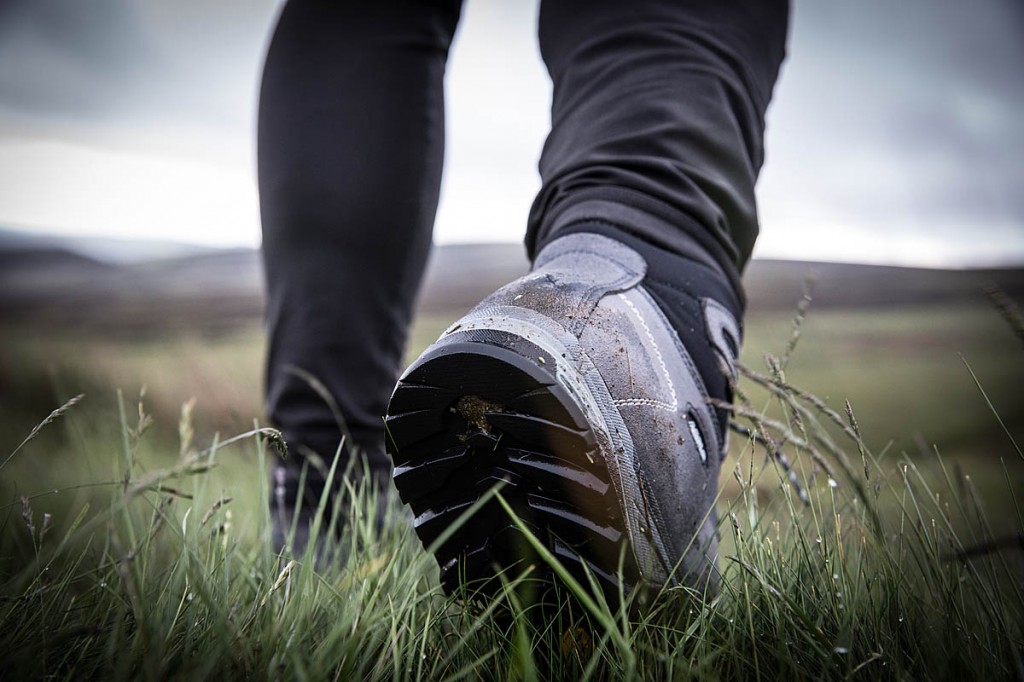
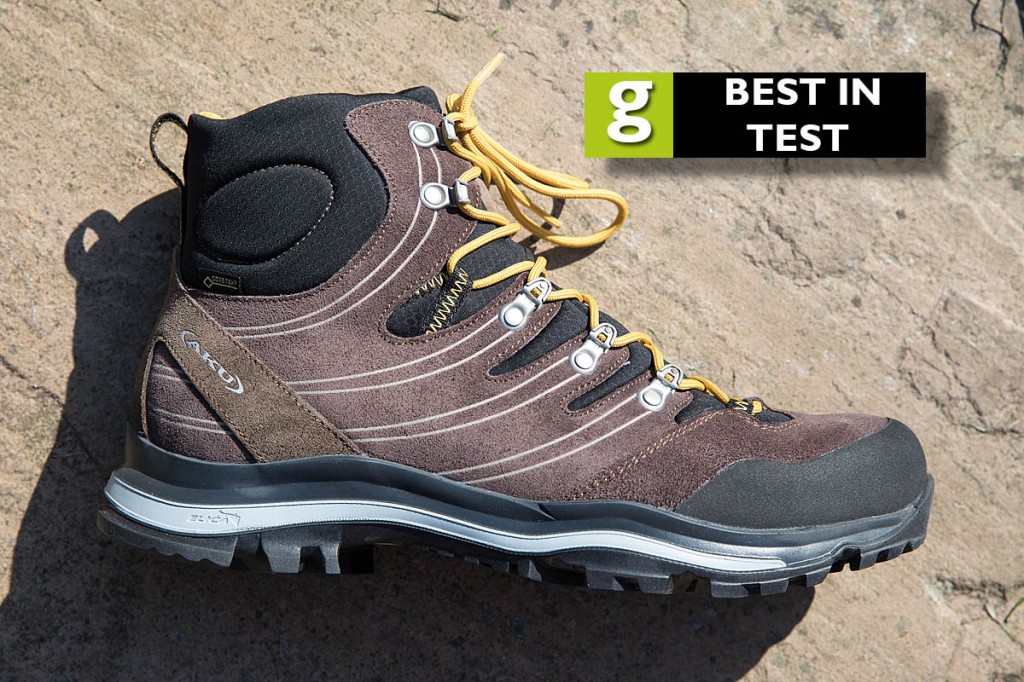
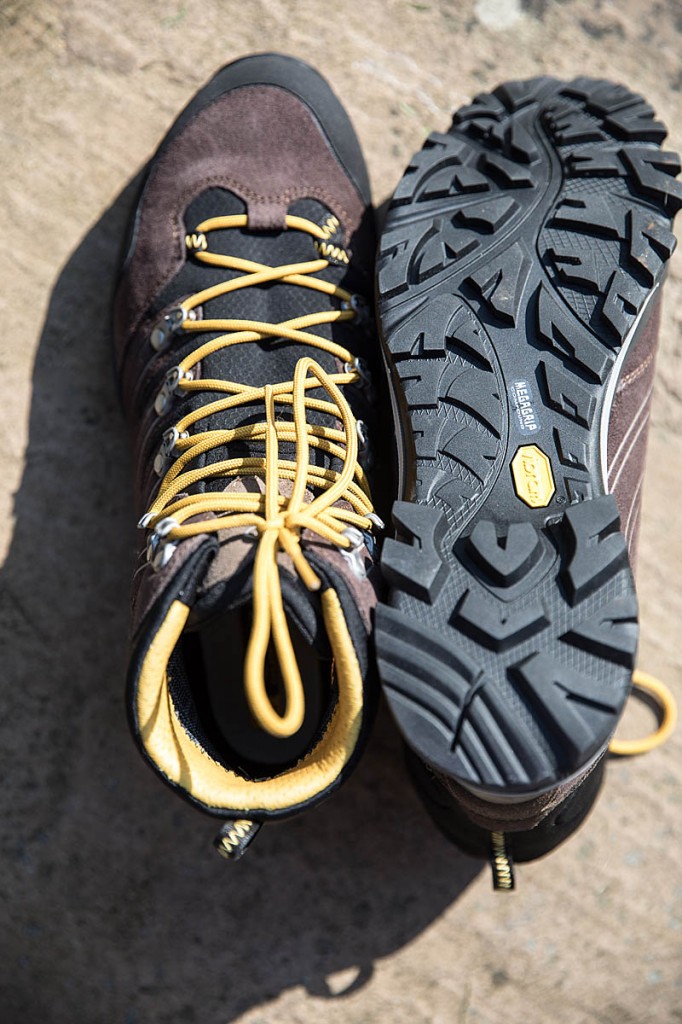
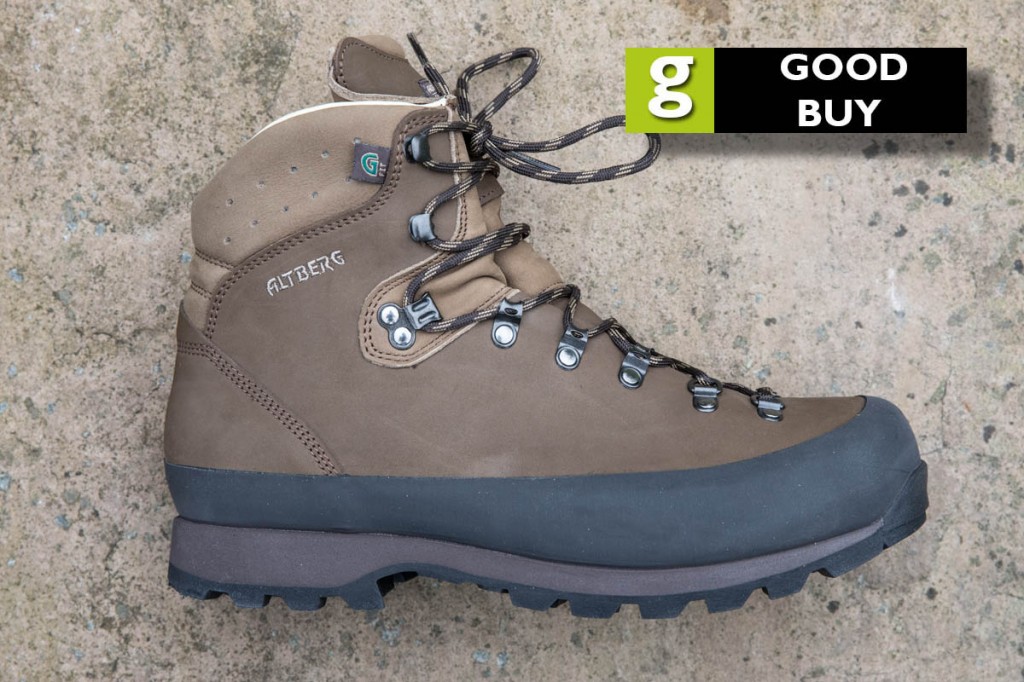
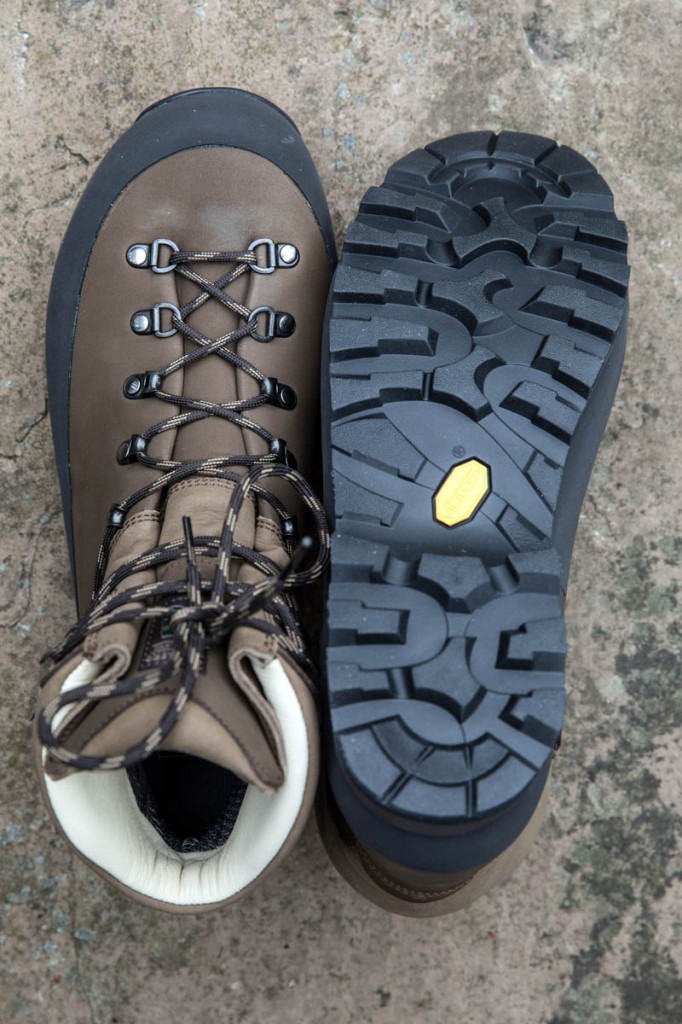
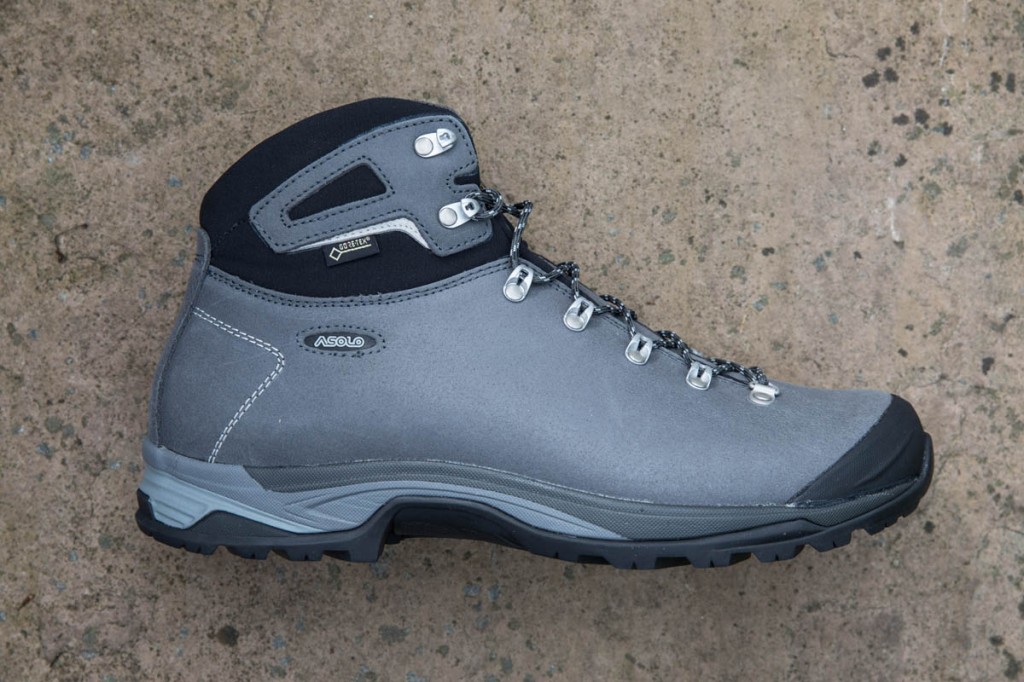
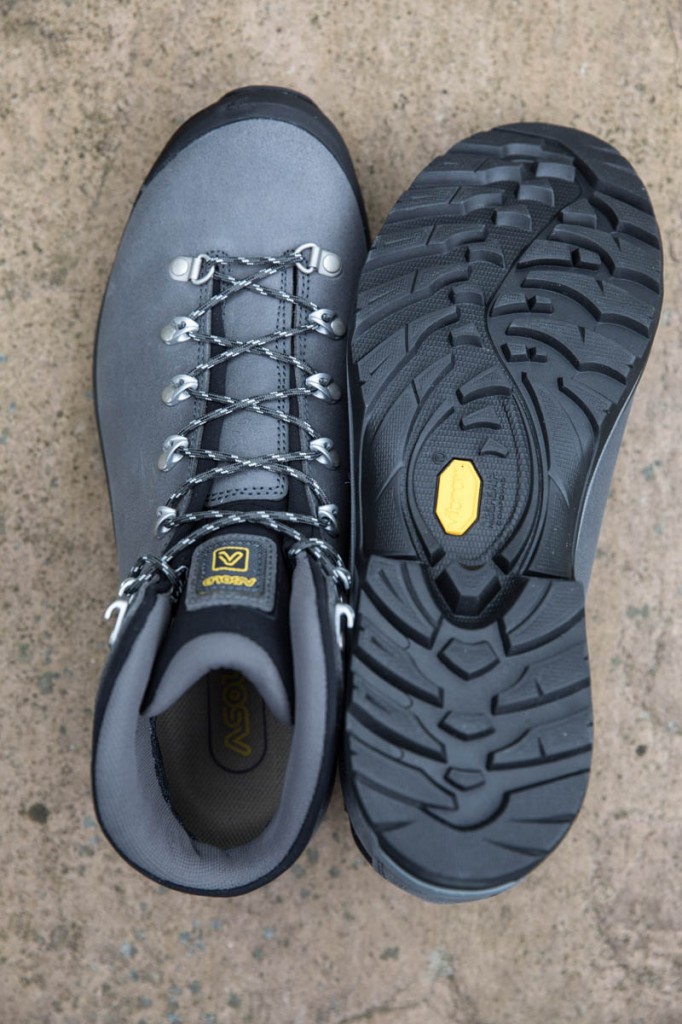
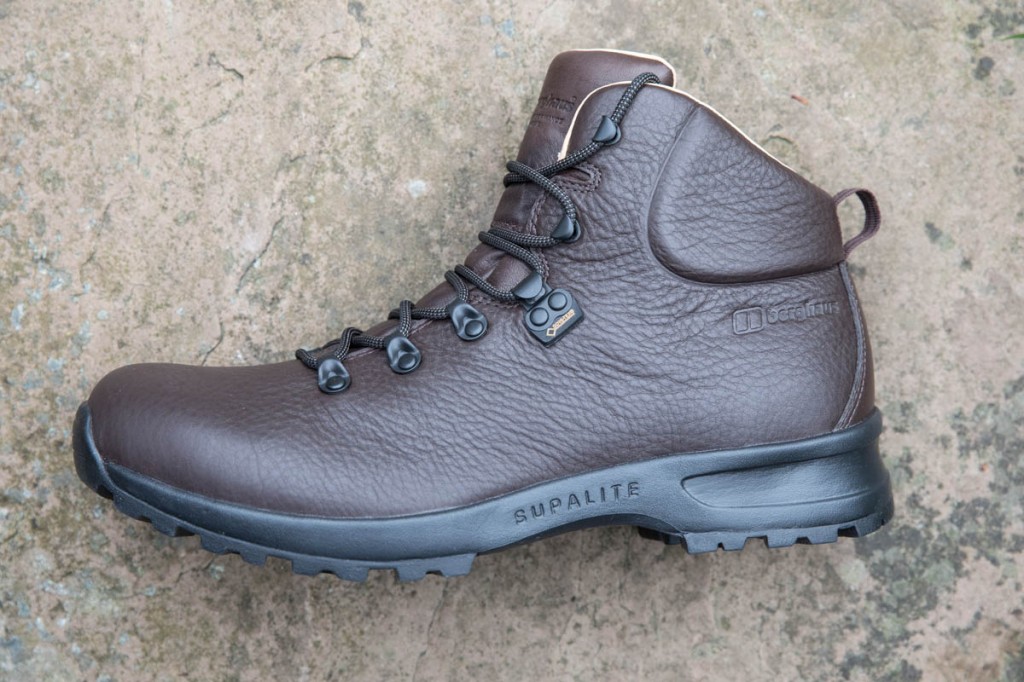
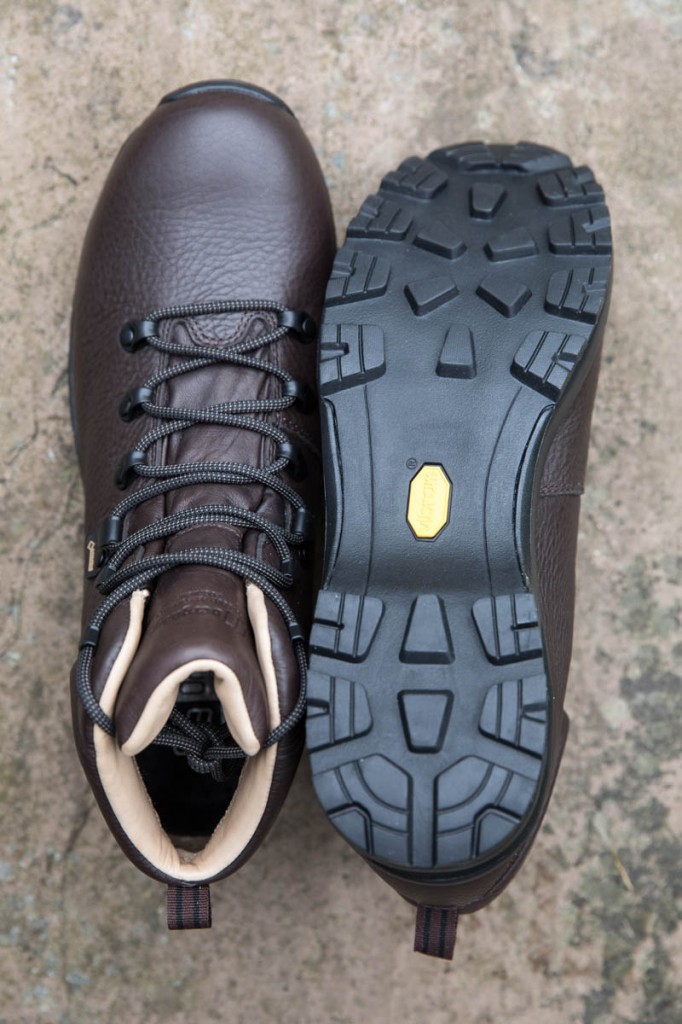
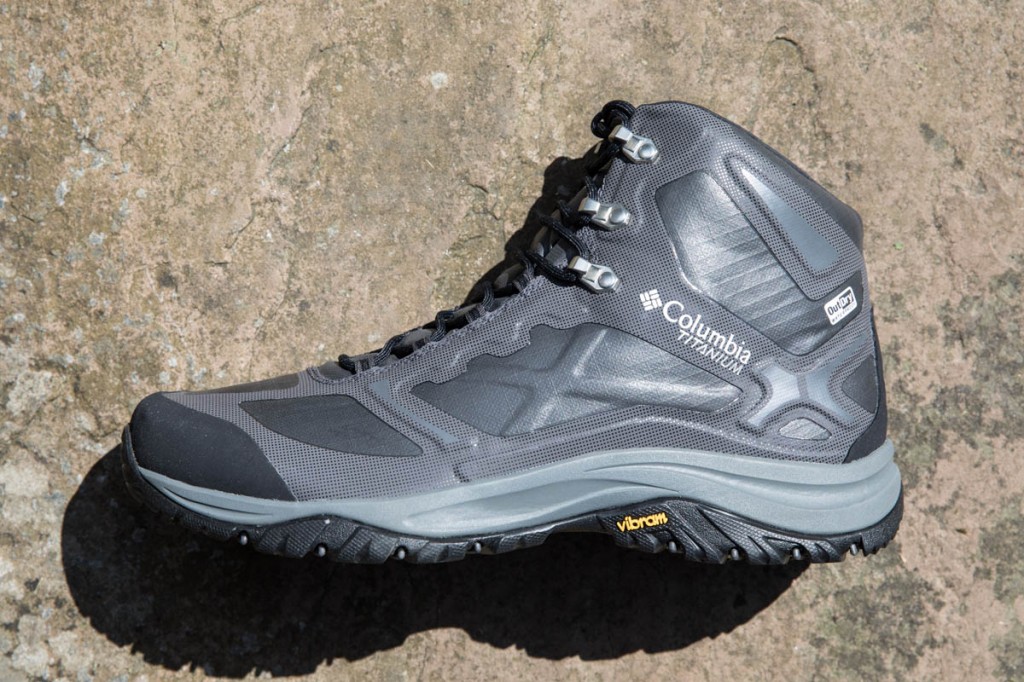
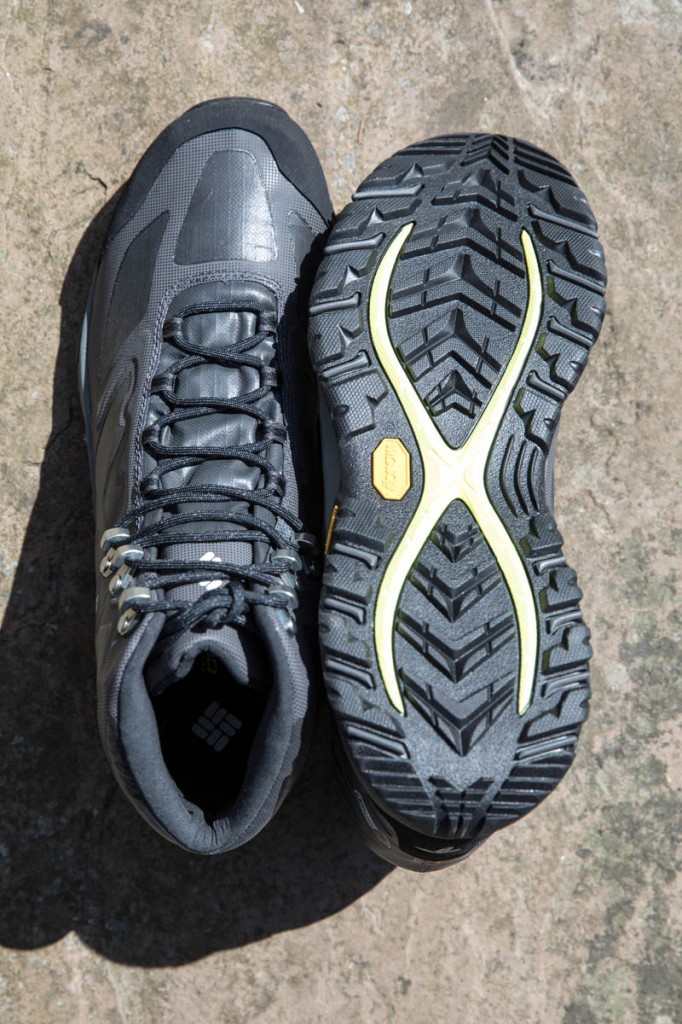
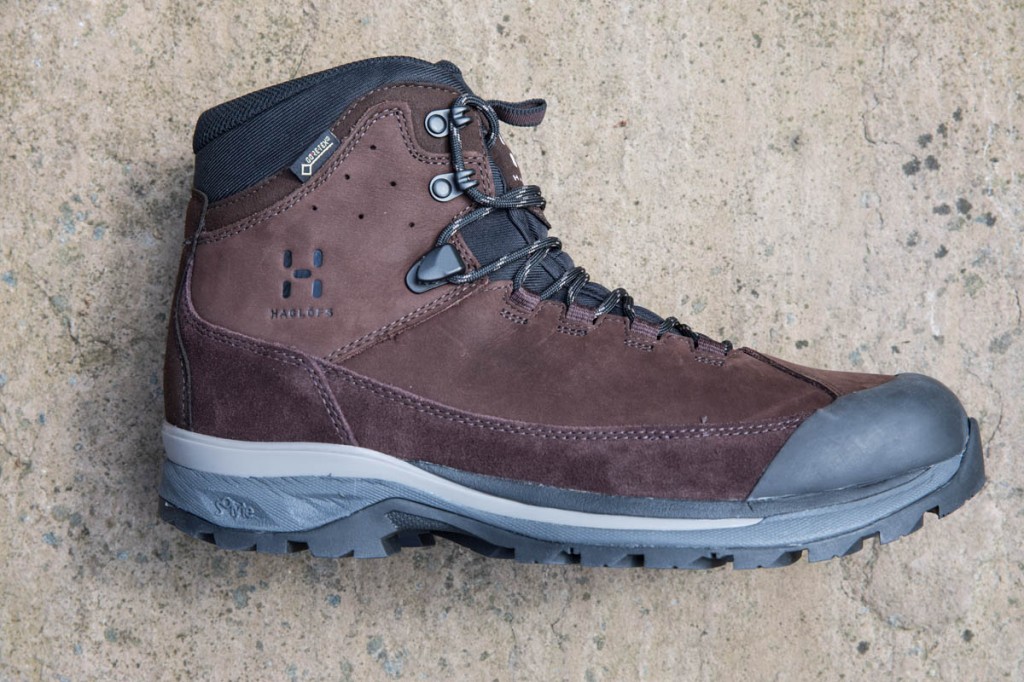
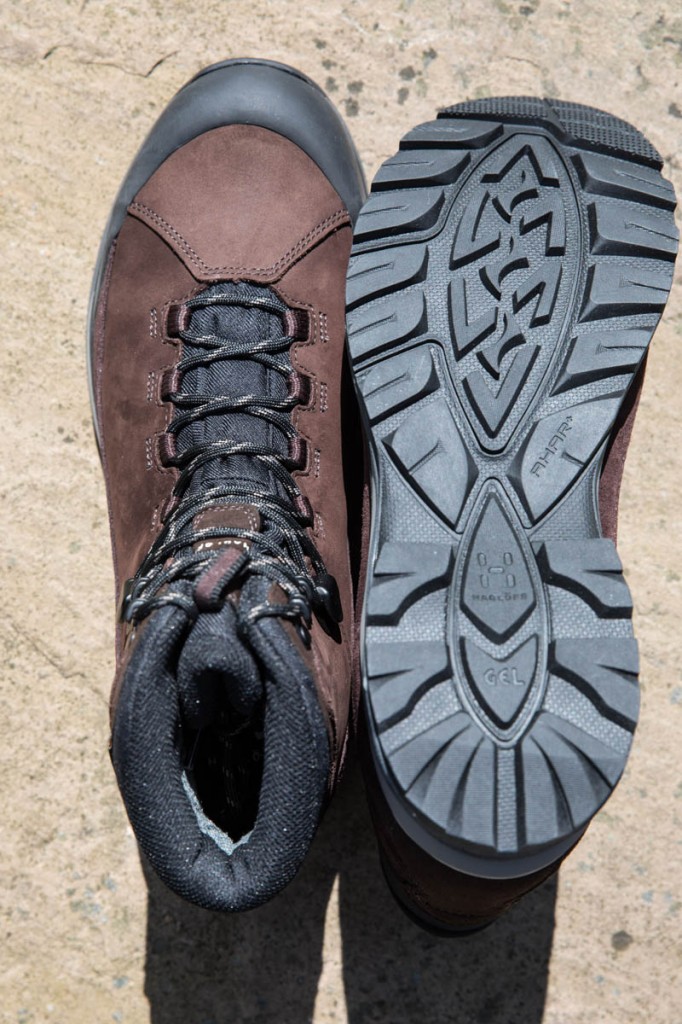
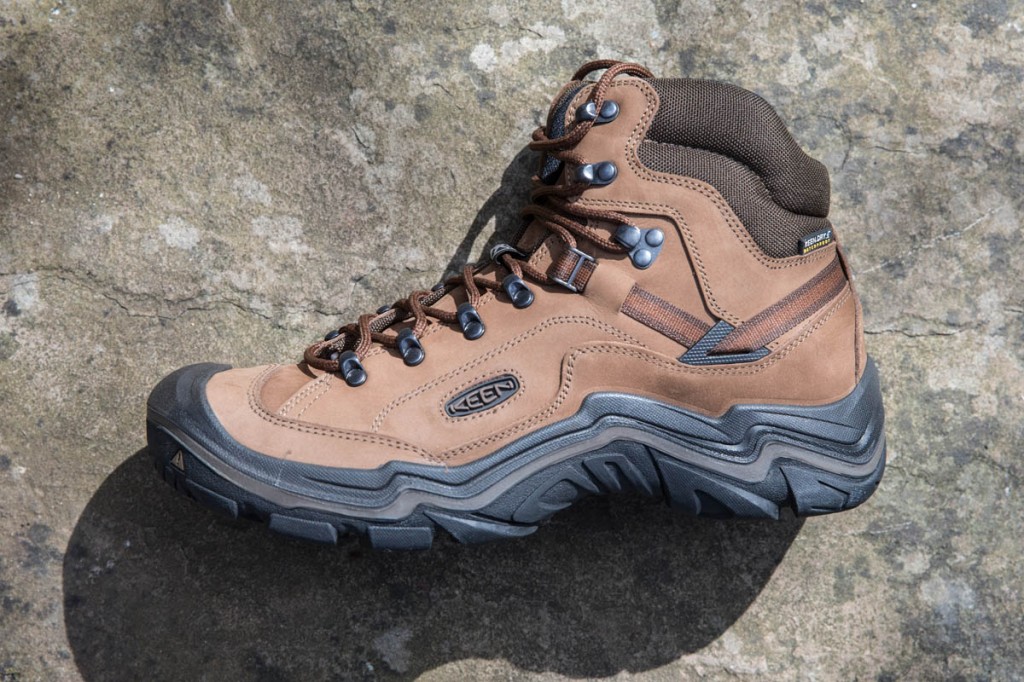
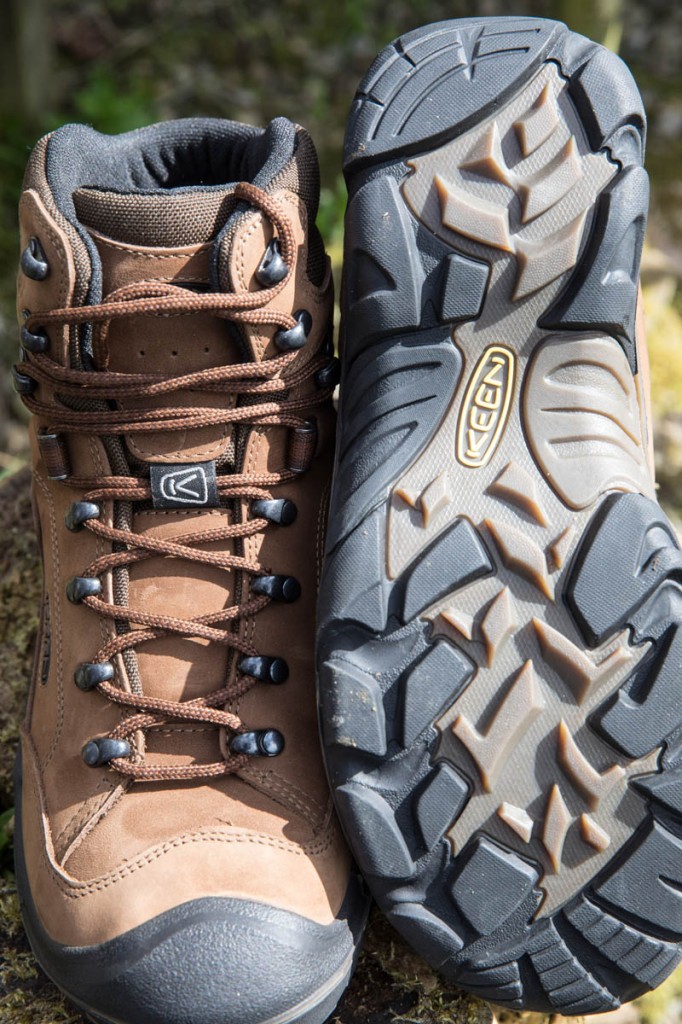
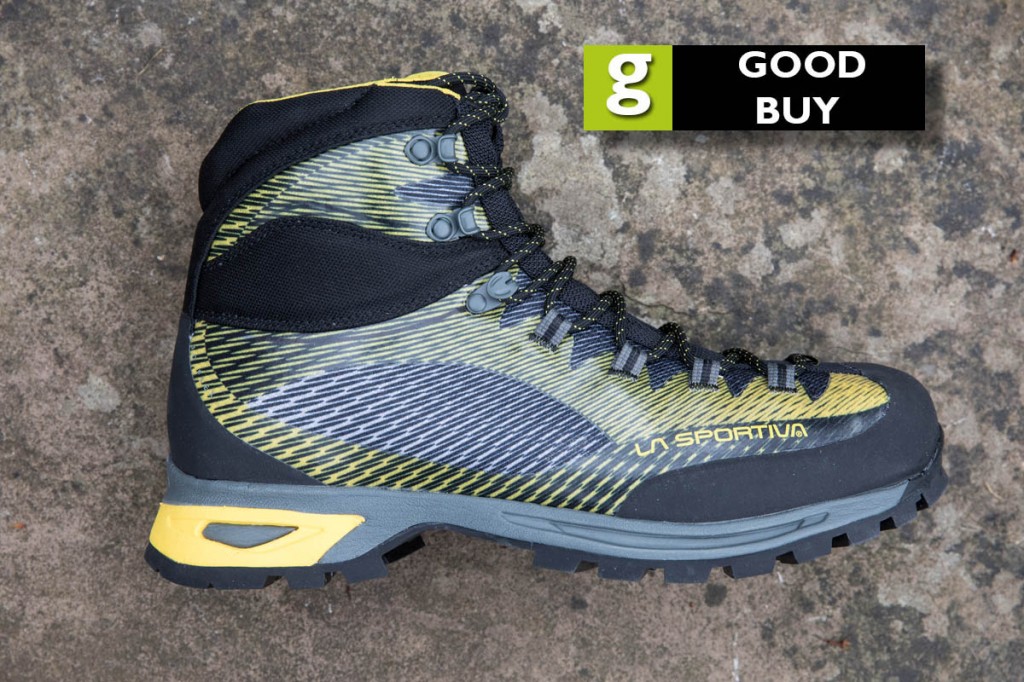
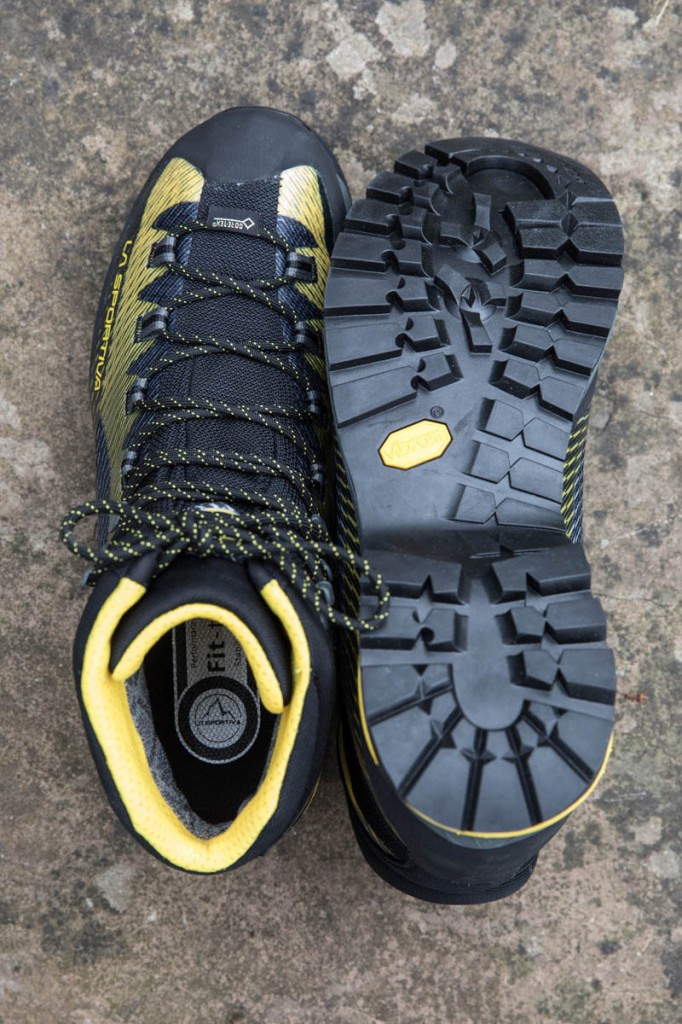
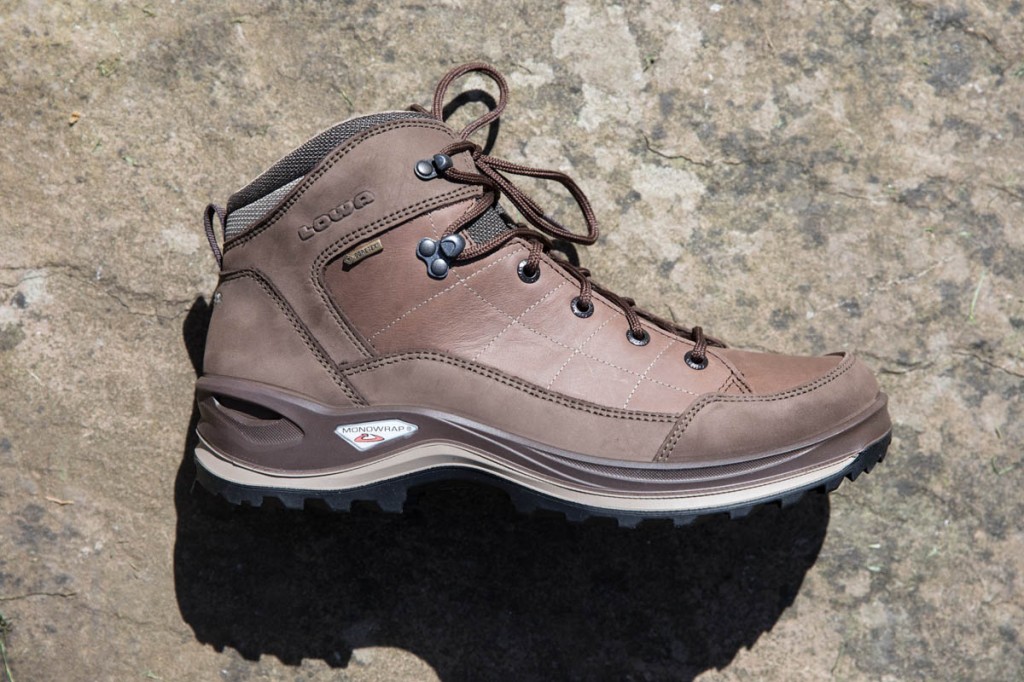
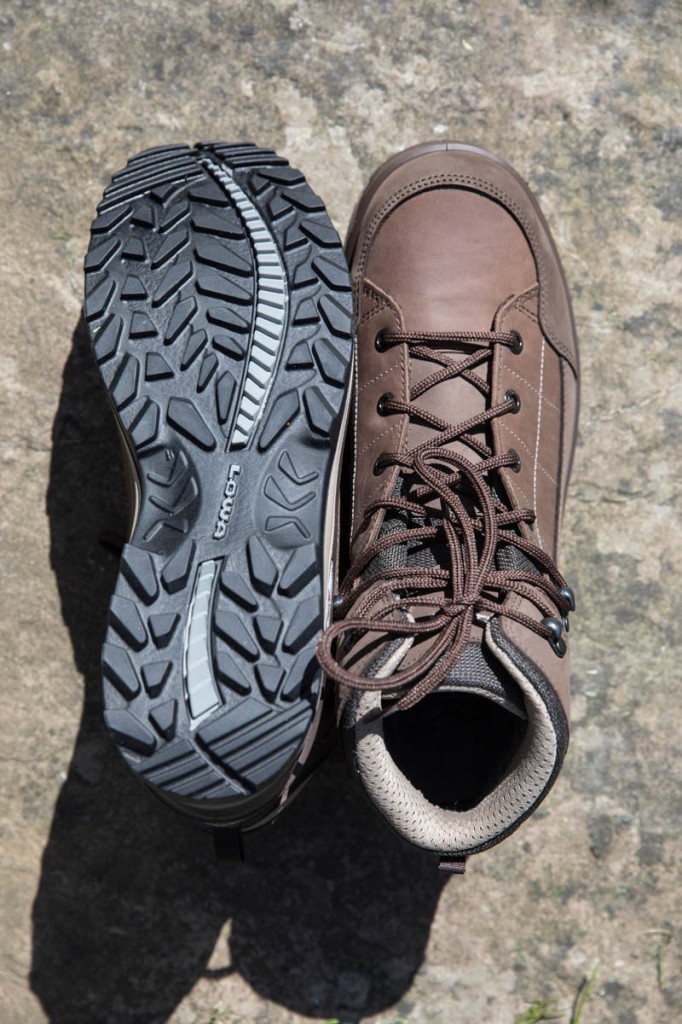
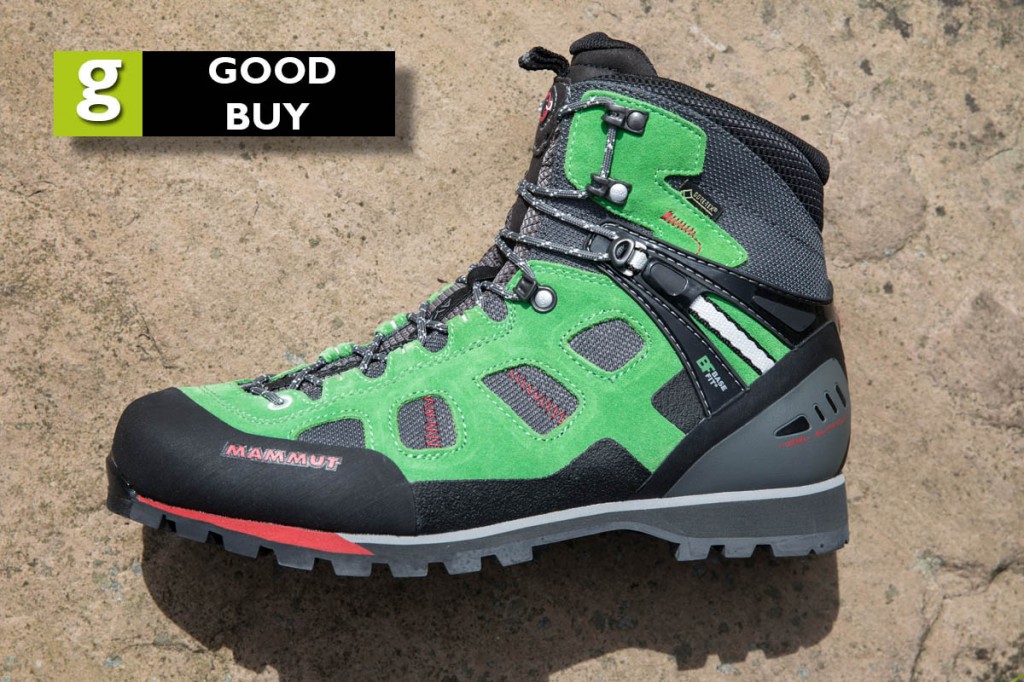
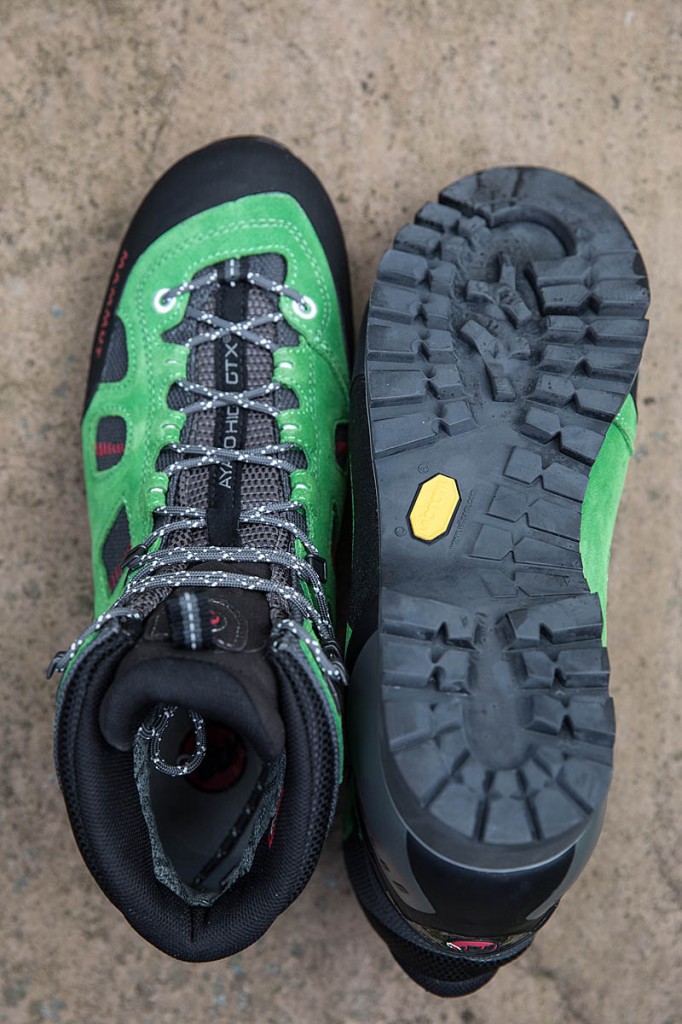
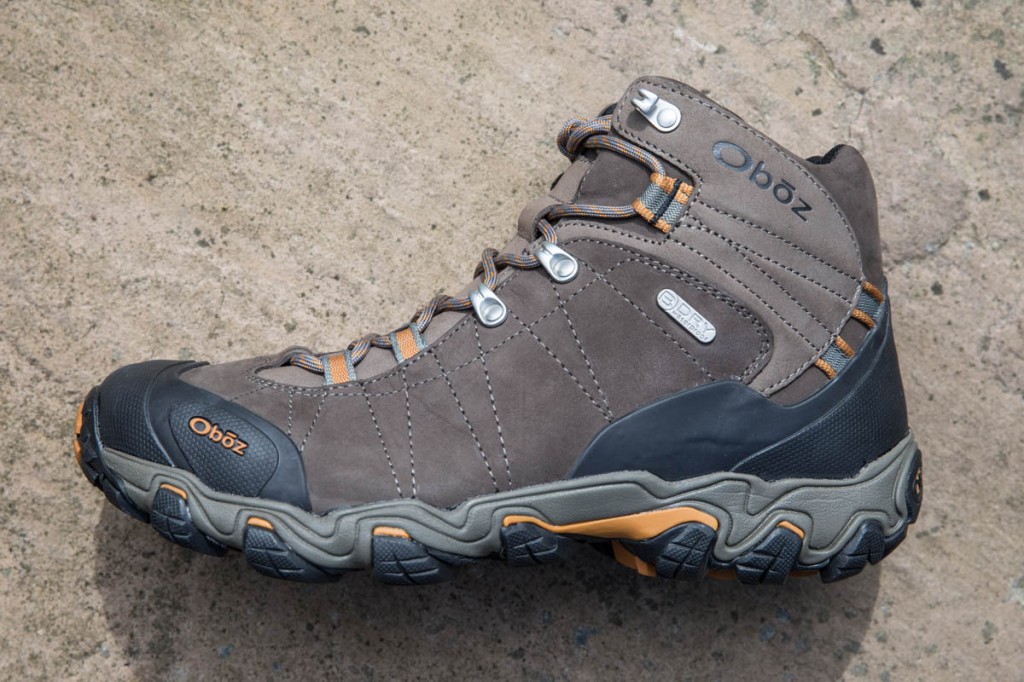
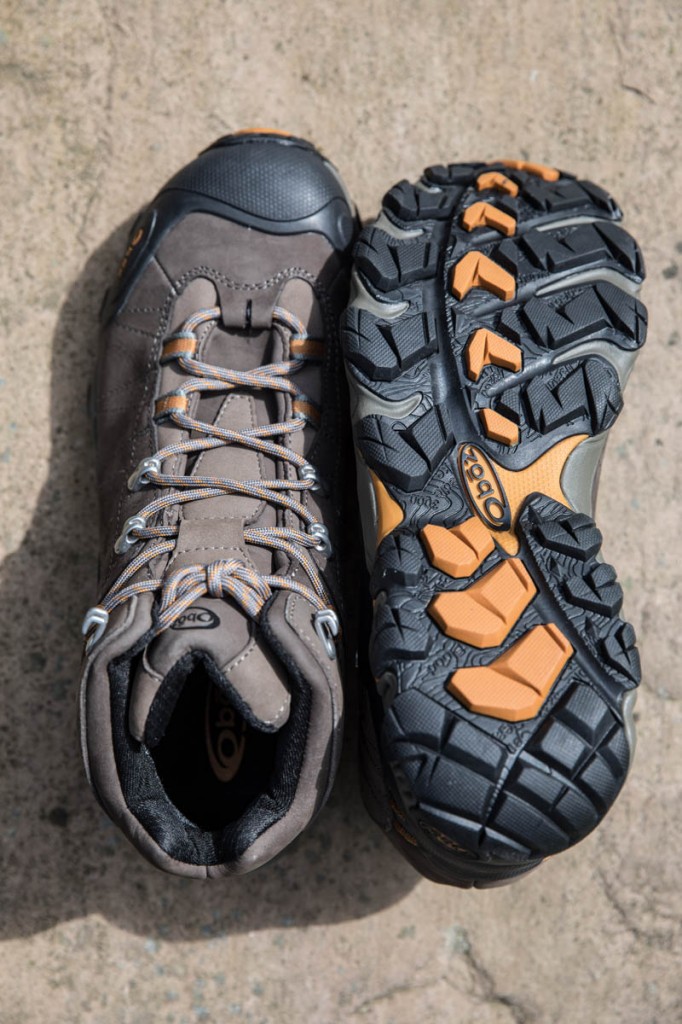
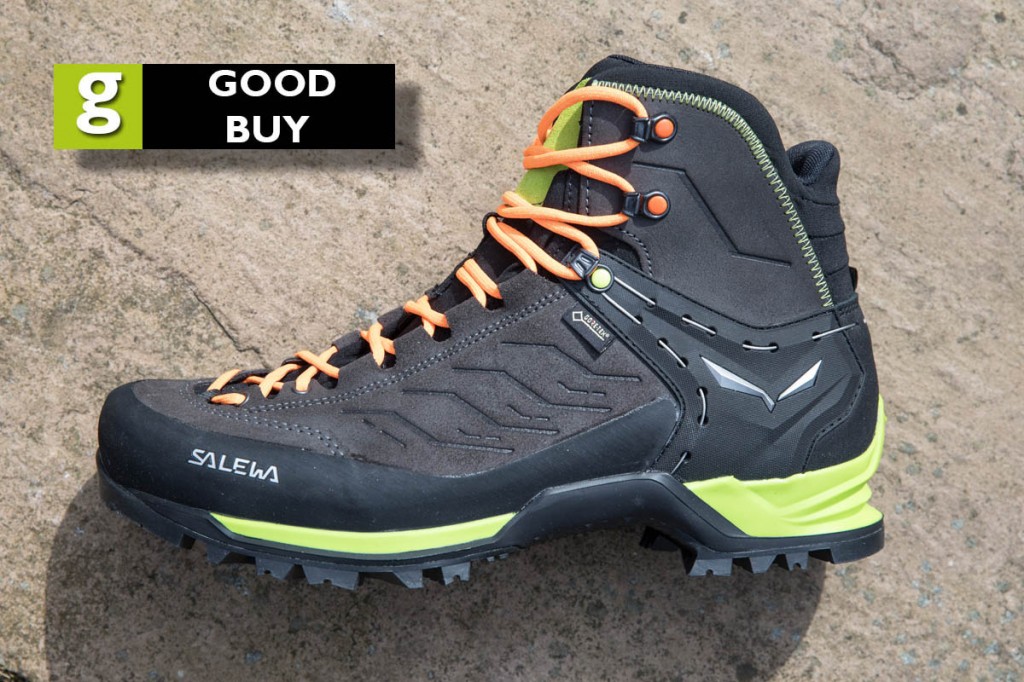
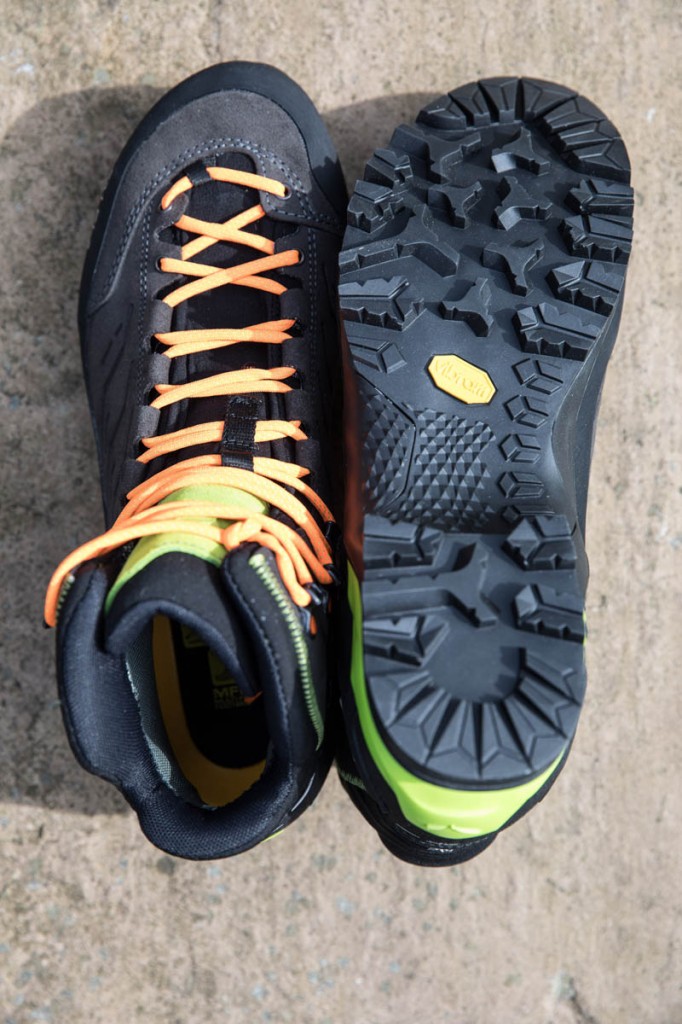
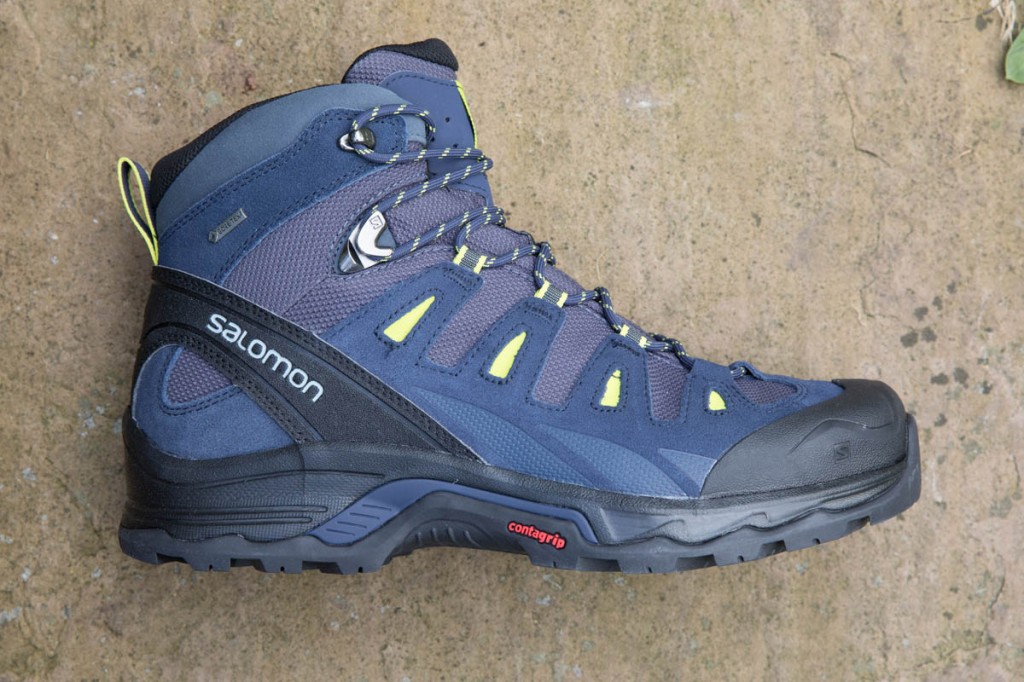
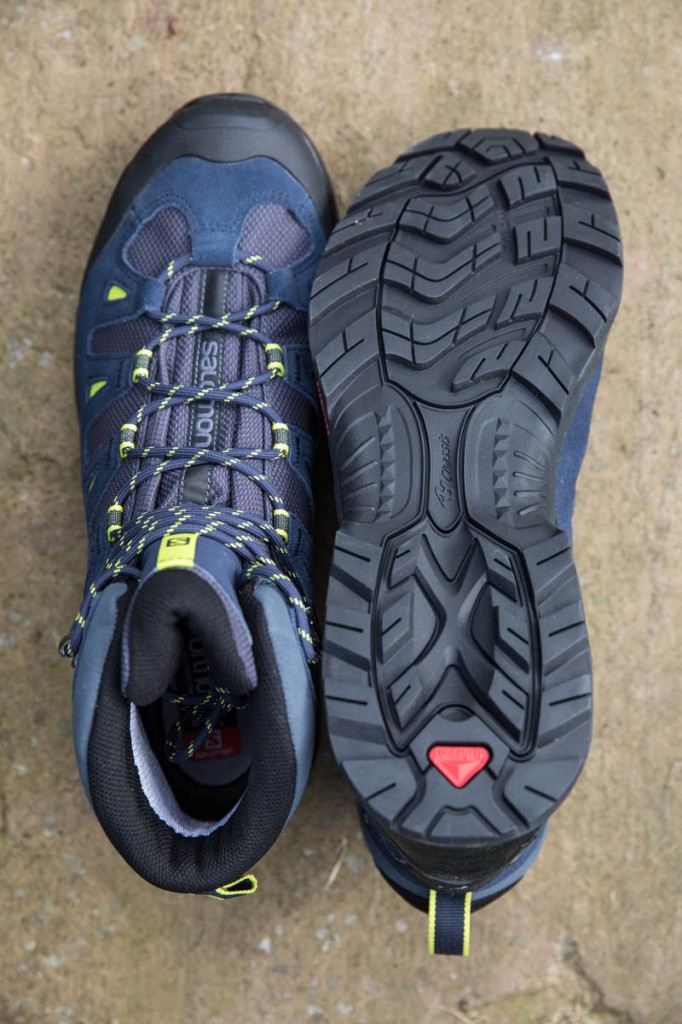
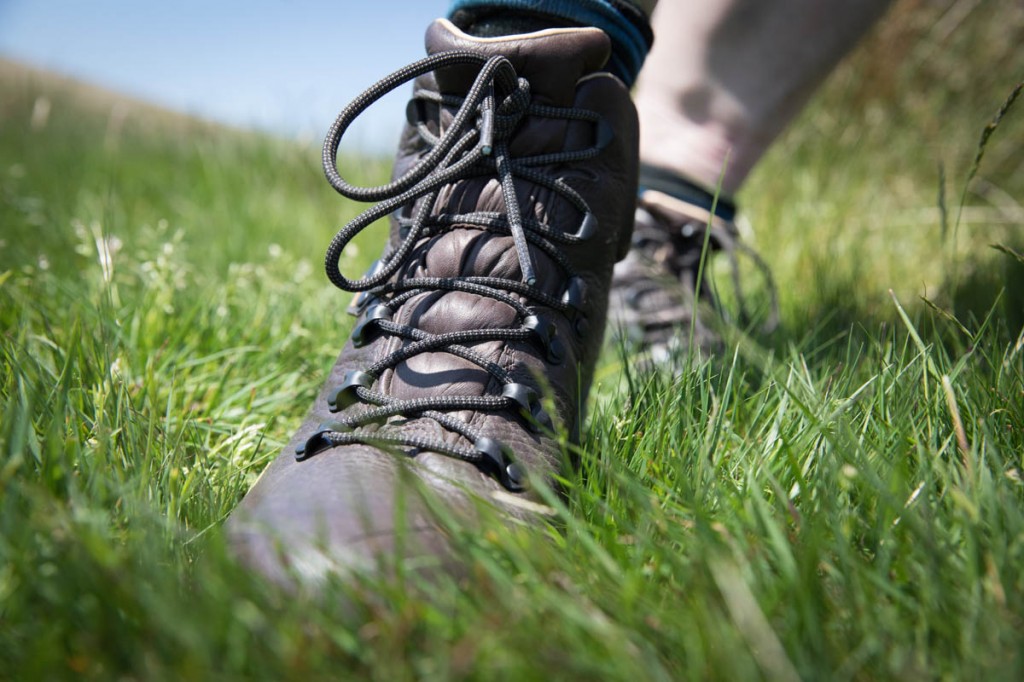
Frank
07 October 2017All big brànds implying big European credentials but most made for a damn site less than europeàn wàges and costs in eastern asia.
Bob
08 October 2017Six of the 13 boots tested are manufactured in Europe.
Bob, editor
Paul
08 October 2017Any chance of you recommending some boots in a price range I can afford - like under £50? Or, if the manufacturers have handed you those boots for free in exchange for a review - can you give me a pair - size 10? Penniless pensioner.
Cagger
10 October 2017Interesting article. Thank you.
It will be very nice to see an article looking at vegetarian/vegan boots. What is available and how do they perform.
There is much about this on the Internet
Cagger
10 October 2017… Sorry – there isn't much about this on the Internet
nick
11 October 2017Never found Vibram soles any use in the Peak District or anywhere else in the UK! no grip!!
Been using Adidas Fast-R GTX mid (Continental Rubber soles) for last 3 years for Spring to Autumn (Occasionally winter when mild) Bliss! a new pair for each year - you can get them in sales on the well known internet trading site - making a good invest!! if you put in a reasonable footfall per annum (everything seems to wear out so quick these days - including me!).
OK; so slippery limestone(white peak)/Chalk (South Downs) Nothing can conquer this! - but the Dark Peaks seem to do well in these, and all-in-all the ankle breaking system (not literally!) keeps me upright - whatever the conditions. I don't use walking poles.
Also good on icy pavements! in the coldness of times.
And they are really lightweight! - i can do more miles!!!
Also they look pretty coooooolll - and the speed lacing is a niche feature - and very practical when you need to get them off/on in a hurry!!
Possibly not good for rocky conditions, like scree slopes where you may need more foot protection! - not had chance to try :(.
I'm deeply intrigued as to whether there is a better/good sole for slippery wet limestone/chalk conditions. Can anyone recommend?
thanks
Mark
18 December 2017Been using the Berghaus Super-light GTX 2 for years. Probably had 6 pairs. These were the best most comfortable boots i had ever had until 18 moths or so ago when Berghaus bought out Brasher. May be a coincidence but last pair fell apart ofter 10 months and current pair have started leaking badly after 3 months. They also had heel lift when new and caused blisters for the 1st time.
Definitely time to move on.